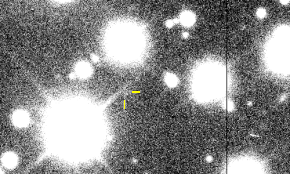
Pasiphae, formerly spelled Pasiphaë, is a retrograde irregular satellite of Jupiter. It was discovered in 1908 by Philibert Jacques Melotte and later named after the mythological Pasiphaë, wife of Minos and mother of the Minotaur from Greek legend.

Callirrhoe (; Greek: Καλλιρρόη), also known as Jupiter XVII, is one of Jupiter's outer natural satellites. It is an irregular moon that orbits in a retrograde direction. Callirrhoe was imaged by Spacewatch at Kitt Peak National Observatory from October 6 through November 4, 1999, and originally designated as asteroid 1999 UX18. It was discovered to be in orbit around Jupiter by Tim Spahr on July 18, 2000, and then given the designation S/1999 J 1. It was the 17th confirmed moon of Jupiter.

Kale, also known as Jupiter XXXVII, is a retrograde irregular satellite of Jupiter. It was discovered in 2001 by astronomers Scott S. Sheppard, D. Jewitt, and J. Kleyna, and was originally designated as S/2001 J 8.

Thyone, also known as Jupiter XXIX, is a retrograde irregular satellite of Jupiter. It was discovered by a team of astronomers from the University of Hawaii led by Scott S. Sheppard in 2001, and given the temporary designation S/2001 J 2.

Harpalyke, also known as Jupiter XXII, is a retrograde irregular satellite of Jupiter. It was discovered by a team of astronomers from the University of Hawaii led by Scott S. Sheppard in 2000, and given the temporary designation S/2000 J 5. In August 2003, the moon was named after Harpalyke, the incestuous daughter of Clymenus, who in some accounts was also a lover of Zeus (Jupiter).
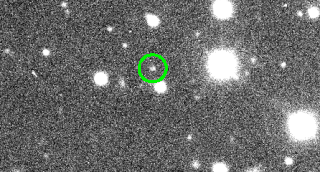
Hermippe, or Jupiter XXX, is a natural satellite of Jupiter. It was discovered concurrently with Eurydome by a team of astronomers from the Institute for Astronomy of the University of Hawaii led by David Jewitt and Scott S. Sheppard and Jan Kleyna in 2001, and given the temporary designation S/2001 J 3.

Praxidike, also known as Jupiter XXVII, is a retrograde irregular satellite of Jupiter. It was discovered by a team of astronomers from the University of Hawaii led by Scott S. Sheppard in 2000, and given the temporary designation S/2000 J 7.

Iocaste, also known as Jupiter XXIV, is a retrograde irregular satellite of Jupiter. It was discovered by a team of astronomers from the University of Hawaii including: David C. Jewitt, Yanga R. Fernandez, and Eugene Magnier led by Scott S. Sheppard in 2000, and given the temporary designation S/2000 J 3.
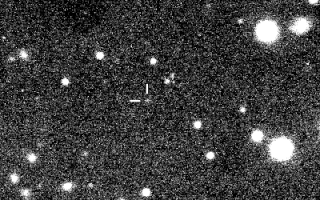
Pasithee, also known as Jupiter XXXVIII, is a retrograde irregular satellite of Jupiter. It was discovered by a team of astronomers from the University of Hawaii led by Scott S. Sheppard in 2001, and given the temporary designation S/2001 J 6.

Chaldene, also known as Jupiter XXI, is a retrograde irregular satellite of Jupiter. It was discovered by a team of astronomers from the University of Hawaii led by Scott S. Sheppard, in 2000, and given the temporary designation S/2000 J 10.

Isonoe, also known as Jupiter XXVI, is a retrograde irregular satellite of Jupiter. It was discovered by a team of astronomers from the University of Hawaii led by Scott S. Sheppard in 2000, and given the temporary designation S/2000 J 6.
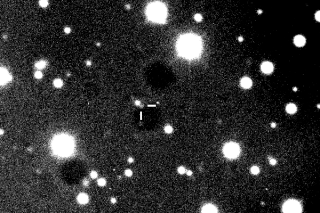
Taygete, also known as Jupiter XX, is a retrograde irregular satellite of Jupiter. It was discovered by a team of astronomers from the University of Hawaii led by Scott S. Sheppard, in 2000, and given the temporary designation S/2000 J 9.
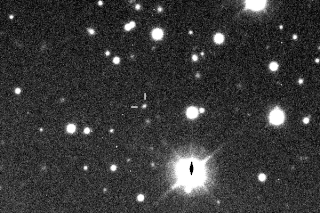
Kalyke, also known as Jupiter XXIII, is a retrograde irregular satellite of Jupiter. It was discovered by a team of astronomers from the University of Hawaii led by Scott S. Sheppard in 2000, and given the temporary designation S/2000 J 2.

Eurydome, also known as Jupiter XXXII, is a natural satellite of Jupiter. It was discovered concurrently with Hermippe by a team of astronomers from the University of Hawaii led by Scott S. Sheppard in 2001, and given the temporary designation S/2001 J 4.

Autonoe, also known as Jupiter XXVIII, is a natural satellite of Jupiter.

Megaclite, also known as Jupiter XIX, is a natural satellite of Jupiter. It was discovered by a team of astronomers from the University of Hawaii led by Scott S. Sheppard in 2000, and given the temporary designation S/2000 J 8.
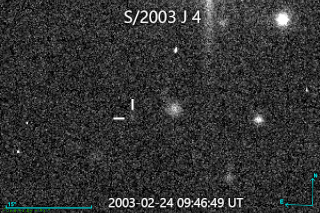
S/2003 J 4 is a natural satellite of Jupiter. It was discovered by a team of astronomers from the University of Hawaii led by Scott S. Sheppard in 2003.
Eirene, also Jupiter LVII and originally known as S/2003 J 5, is a retrograde irregular satellite of Jupiter. It was discovered by a team of astronomers from the University of Hawaii led by Scott S. Sheppard in 2003 but was then lost. It was recovered in 2017 and given its permanent designation that year.

S/2003 J 9 is a retrograde irregular satellite of Jupiter. It was discovered by a team of astronomers from the University of Hawaii led by Scott S. Sheppard in 2003.

Valetudo, also known as Jupiter LXII and originally known as S/2016 J 2, is an irregular moon of Jupiter. It was discovered by Scott S. Sheppard and his team in data acquired by the 6.5-m Magellan-Baade telescope of the Las Campanas Observatory in 2016, but was not announced until 17 July 2018, via a Minor Planet Electronic Circular from the Minor Planet Center, which also reported the discovery of nine other of Jupiter's moons. Besides data from Las Campanas, the original announcement also referred to data acquired through the 8.1-m Gemini North telescope of the Mauna Kea Observatories as well as the 4.0-m reflector of the Cerro Tololo Inter-American Observatory.
